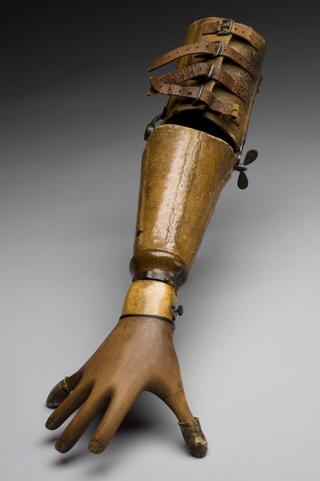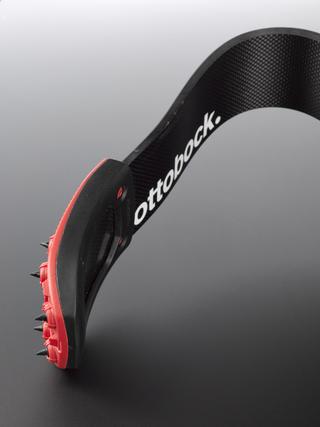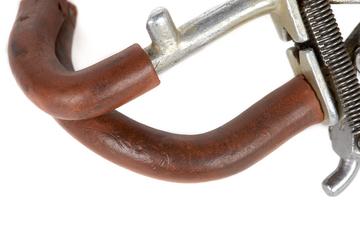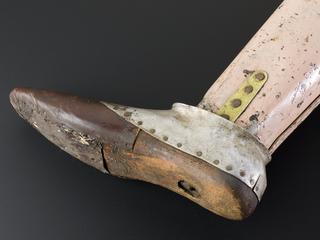
Artificial right leg, New York, United States, 1910-1914
- Made:
- 1910-1914 in New York county




American leather right below knee prosthesis. Leather lace-up corset, jointed side steels to well padded wooden socket, wooden foot, toe and ankle joints. Made c.1912-14. (Weight 5 lbs 2.2 kg).
Made for a person who has had their leg amputated below the knee, the foot, toes and ankles of this artificial right leg are all jointed and able to move. The leather lace-up corset at the top is used to keep the prosthesis in place and secure.
The exact maker of the limb is unknown, but it was constructed in America. After their experience dealing with limb amputations during the American Civil War (1861-1865), American limb makers became well established and able to produce limbs in volume. When war broke out in Europe in 1914, they were better equipped to deal with the demand for limbs than the British companies. From 1915, many American makers were brought over to Queen Mary’s Hospital in Roehampton, London, to set up workshops. Queen Mary’s was the main British limb-fitting centre in both world wars
Details
- Category:
- Orthopaedics
- Object Number:
- 1999-471
- Measurements:
-
overall: 143 mm x 952 mm x 242 mm, 2.2kg
- type:
- artificial leg
- credit:
- Richmond Twickenham and Roehampton Healthcare NHS Trust




